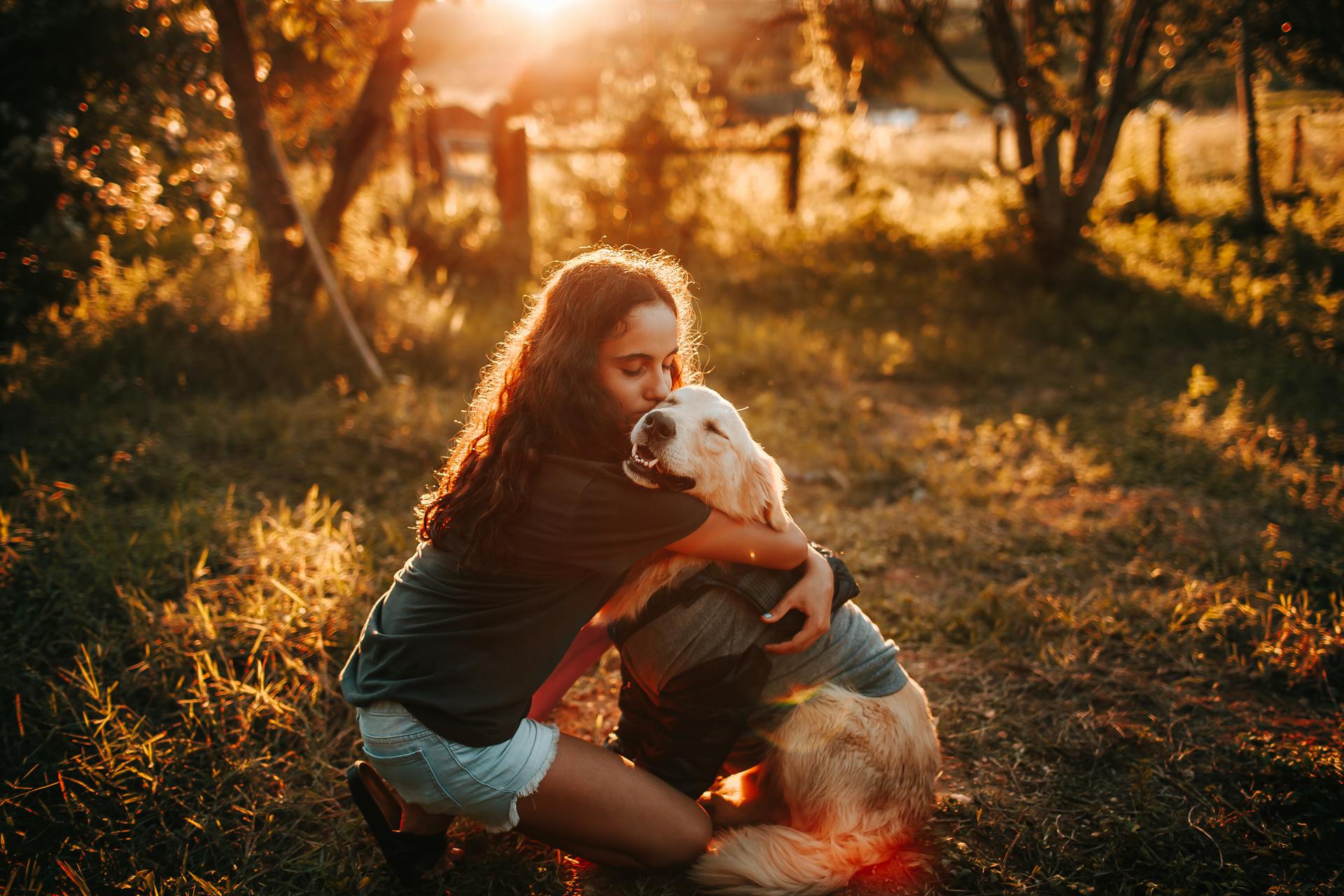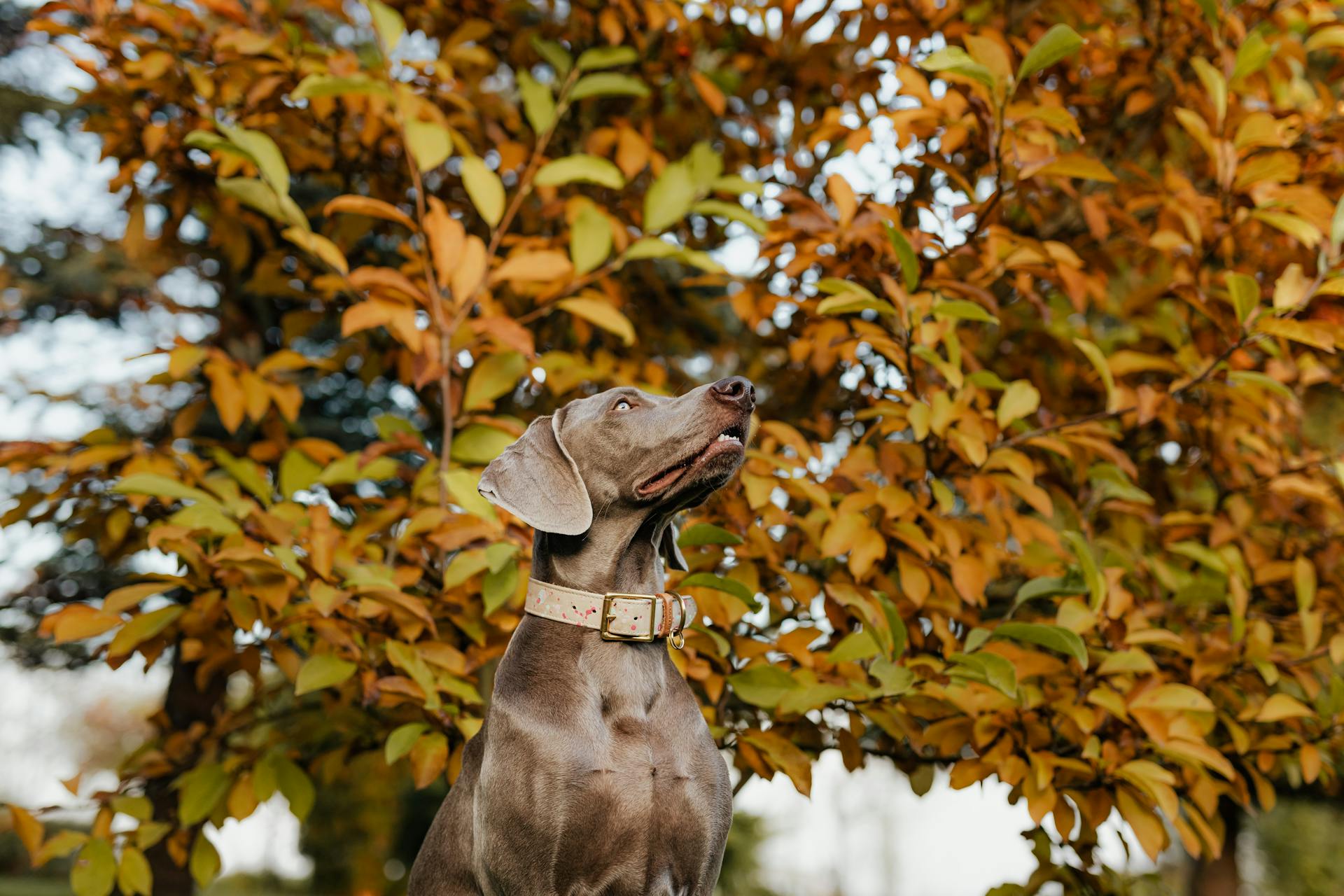
Dog aggression rehab is a complex process that requires patience, consistency, and a deep understanding of canine behavior. The key to successful rehab is identifying the underlying causes of aggression, which can range from fear and anxiety to past trauma or medical issues.
A common misconception is that aggressive dogs are inherently "bad." In reality, they're often acting out due to underlying emotional or physical pain. For example, a dog that's fearful of strangers may become aggressive when approached, not because it's malicious, but because it feels threatened.
Rehabilitating an aggressive dog requires a tailored approach that addresses its unique needs and circumstances. This may involve desensitization and counterconditioning techniques, as well as changes to the dog's environment and daily routine. By addressing the root causes of aggression, you can help your dog feel more secure and confident.
Understanding Aggression
Aggression in dogs is a complex issue, but understanding its underlying causes can help you address it more effectively. Aggressive behaviors typically occur when a dog feels threatened, fearful, stressed, anxious, conflicted, protective, overstimulated, frustrated, angry, or in pain.
Dogs display aggressive behaviors to warn, intimidate, defend, and/or cause harm. This can range from minor posturing to serious and dangerous attacks, and everything in between.
Warning signs of aggression include lifting the lip, growling, baring teeth, snarling, lunging, muzzle punching, air snapping, biting without causing injury, and biting while causing injury.
Aggressive dogs often stand stiffly and rigidly, with their body language screaming "back off." Growling, baring teeth, and snarling are all clear indicators of aggression.
Some common aggressive behaviors include lunging at someone without making physical contact, intentionally pushing against a person with their muzzle, snapping, nipping, and biting without pressure or hard enough to bruise or puncture the skin.
Here are some common warning signs of aggression:
- Lifting the lip
- Growling
- Baring teeth
- Snarling
- Lunging
- Muzzle punching (bumping or punching with a closed mouth)
- Air snapping (biting the air)
- Biting without causing injury
- Biting while causing injury
Preparation and Considerations
Before starting a dog aggression rehab program, it's essential to consider your dog's safety and your family's well-being. You should discuss the risks and prognosis with a professional, such as a certified behavior trainer, veterinarian, or veterinary behaviorist, during your initial consultation.
Some dogs can be managed safely with the right strategies, but others may be too risky for their families. Important questions to ask yourself include: Is my dog a danger to my family and me? Can I safely contain, manage, and work with my dog in situations where aggressive behaviors are a problem?
Here are some key considerations to keep in mind:
- Is my dog a danger to my family and me?
- Can I safely contain, manage, and/or work with my dog in situations where aggressive behaviors are a problem?
- Can I safely manage, confine, and/or work with my dog when I have visitors over my house?
- Am I willing to consistently implement safety and management strategies?
- Is my dog dangerous to my child(ren) or their friends?
- Am I willing to make the necessary lifestyle changes to keep my dog and others safe?
- Do my dog's behaviors affect my family to the point that we no longer enjoy his company?
- Do my lifestyle and living situation allow my dog to live a happy, fulfilled, and safe life?
- If management fails and my dog becomes loose, will a family member, visitor, neighbor, child, or another animal becomes seriously injured or worse?
Important Preliminary Considerations
Before you start a behavior modification program, it's essential to consider the risks and prognosis of your dog's aggressive behavior. This means discussing these factors with a professional, such as a certified behavior trainer, veterinarian, or veterinary behaviorist, during your initial consultation.
Some dogs with aggressive behavior can be managed safely, but others may pose a significant risk to their families and others. You should ask yourself if your dog is a danger to you and your family.
To assess this, consider the following questions: Are you able to safely contain, manage, and work with your dog in situations where aggressive behaviors are a problem? Can you manage your dog when you have visitors over? Are you willing to implement safety and management strategies, such as wearing a muzzle or putting up safety barriers in your home?
You should also think about the impact of your dog's behavior on your family's lifestyle. Do you enjoy your dog's company, or have their behaviors become a source of stress? If management fails and your dog becomes loose, are you prepared for the potential consequences?
Here are some key questions to ask yourself:
- Is my dog a danger to my family and me?
- Can I safely contain, manage and/or work with my dog in situations where aggressive behaviors are a problem?
- Can I safely manage, confine and/or work with my dog when I have visitors over my house?
- Am I willing to consistently implement safety and management strategies?
- Is my dog dangerous to my child(ren) or their friends?
- Am I willing to make the necessary lifestyle changes to keep my dog and others safe?
- What is the quality of life for other animals living in my home?
- Do my dog’s behaviors affect my family to the point that we no longer enjoy his company?
- Do my lifestyle and living situation allow my dog to live a happy, fulfilled, and safe life?
- Will a family member, visitor, neighbor, child, or another animal becomes seriously injured or worse if management fails?
Veterinarian Consultation
If you suspect that your dog's aggressive behavior might be caused by a medical issue, a veterinarian consultation is essential. Your veterinarian can provide a thorough exam, check for pain or illness, and check blood work to search for medical issues that might be contributing to your dog's behavior.
You should ask your veterinarian if they have experience with aggressive behavior in dogs, as not all veterinarians specialize in this area. A veterinarian with experience in canine behavior can help you determine if your dog's aggression is caused by a medical issue.
A Fear Free Certified veterinarian has passed rigorous credentialing and can provide a safe, efficient, and stress-free appointment for your dog. They may also have expertise in behavior management and medication.
A unique perspective: Dog Training App
A board-certified Veterinary Behaviorist is the best option for complex or severe aggression cases. They can recommend a safety and management plan, behavior modification and training strategies, and prescribe behavioral medication.
Here are some services a Board-Certified Veterinary Behaviorist can provide:
- Recommend a Safety & Management Plan
- Recommend Behavior Modification & Training strategies
- Prescribe behavioral medication
- Recommend a dog trainer and/or behavior consultant
- Recommend specific physical exams and blood panels
- Counsel families on difficult decisions
To find a Board-Certified Veterinary Behaviorist near you, you can visit the American College of Veterinary Behaviorists (ACVB) website.
Recognizing Aggressive Behavior
Recognizing Aggressive Behavior is a crucial step in understanding and addressing dog aggression.
Aggressive dogs often feel threatened, fearful, stressed, anxious, or in pain, which can lead to a range of behaviors.
Dogs may display aggressive behaviors to warn, intimidate, defend, or cause harm, and these behaviors can range from minor posturing to serious attacks.
Some common warning signs of aggression include standing stiffly and rigidly, growling, baring teeth, snarling, and lunging at someone without making physical contact.
Aggressive behavior can also include intentionally pushing against a person with their muzzle, snapping, nipping, and biting without pressure or hard enough to bruise or puncture the skin.
Here are some specific aggressive behaviors to look out for:
- warning signals such as lifting the lip, growling, baring teeth, snarling, lunging, muzzle punching, and air snapping
- biting without causing injury
- and biting while causing injury (to various degrees)
Causes of Aggression
Aggression in dogs is often a learned behavior stemming from feeling frightened, unprotected, or vulnerable. It can be triggered by various factors, including poor socialization, lack of socialization, and improper punishment from humans.
Some common reasons for aggression in dogs include fear, territorial instincts, and pain. Fear aggression can occur when dogs feel trapped or in danger, while territorial instincts can lead to aggression when a dog's personal space is invaded. Pain can also cause aggression, especially if the dog is injured or in discomfort.
A dog's environment and upbringing play a significant role in determining its aggression level. For instance, dogs that are poorly socialized may become aggressive towards strangers, children, family members, or other dogs. In contrast, dogs that have been properly socialized and trained are less likely to exhibit aggressive behavior.
Here are some common types of aggression in dogs:
- Fear aggression: triggered by fear or anxiety
- Territorial aggression: triggered by invasion of personal space or territory
- Pain aggression: triggered by physical pain or discomfort
- Dominance aggression: triggered by a perceived threat to status or dominance
- Predatory aggression: triggered by a high prey drive or instinct to chase
- Protective aggression: triggered by a perceived threat to a person or animal
Why Do People Become Aggressive?
People become aggressive for a variety of reasons, and it's often a result of feeling threatened, fearful, or vulnerable.
Dogs, in particular, may become aggressive when they're poorly socialized, which can lead to difficulties adjusting to new people and situations.
A lack of socialization can cause dogs to use aggression as a way of coping with what they think are threats, making them react aggressively toward strangers, children, family members, or other dogs.
Some dogs may also become aggressive due to instinctual behaviors, such as predatory instincts, which can cause them to chase smaller animals or even young children.
Other dogs may become aggressive in an attempt to establish dominance, often in response to commands, being groomed, or being asked to leave an object or place they're guarding.
Territorial aggression can also be a factor, where dogs may bark, growl, and lunge at people they perceive as intruding on their territory.
Resource guarding, where dogs become aggressive when guarding food, toys, crates, and places they like to spend a lot of time, can also develop instinctually among puppies if they grew up having to compete with others in their litter for food.
A fresh viewpoint: Puppy Resource Guarding with Other Dogs
Dogs may also become aggressive due to medical issues, such as pain or discomfort, which can cause them to bite or act aggressively.
Here are some common reasons why people may become aggressive:
By understanding these reasons, we can work on addressing the underlying causes of aggression and helping people and dogs develop healthier relationships.
Animal Rehoming and Rescue
Animal rehoming and rescue centers often take in dogs that have been surrendered due to behavioral issues, but many of these dogs can go on to become loving and loyal companions with proper training and care.
Some of the most common behavioral issues seen in rescue dogs include fear aggression, which can be caused by a lack of socialization in the first 16 weeks of life.
Dogs that are left in shelters for extended periods of time can develop separation anxiety, which can lead to destructive behavior when left alone.
Proper training and socialization can help to reduce the likelihood of these behavioral issues from developing in the first place.
Many rescue dogs have been abandoned due to their breed or size, but with the right care and attention, they can thrive in loving homes.
Intriguing read: Cockapoo Behaviour Problems
Health Factors
Dogs in pain may bite if touched in a sensitive spot or simply act out toward the closest person.
A veterinarian can evaluate your dog's health and recommend whether it needs medical treatment or a professional dog trainer to intervene.
If your dog is normally friendly but suddenly behaves aggressively, there may be a medical reason.
Sources
- Least Intrusive, Minimally Aversive (known as LIMA). (iaabc.org)
- American Veterinary Society of Animal Behavior (AVSAB) (avsab.org)
- International Association of Animal Behavior Consultants (IAABC) (iaabc.org)
- Certification Council of Professional Dog Trainers (CCPDT) (ccpdt.org)
- American Veterinary Society of Animal Behavior (AVSAB) (avsab.org)
- www.demarinisdogtraining.com (demarinisdogtraining.com)
- Dog Aggression Training - Tackling It Head On (thedogwizard.com)
- YouTube (youtube.com)
- canineperspectiveinc (instagram.com)
- Aggressive Dog Behavior Training in Maryland (olk9md.com)
- Yelp page (yelp.com)
Featured Images: pexels.com


